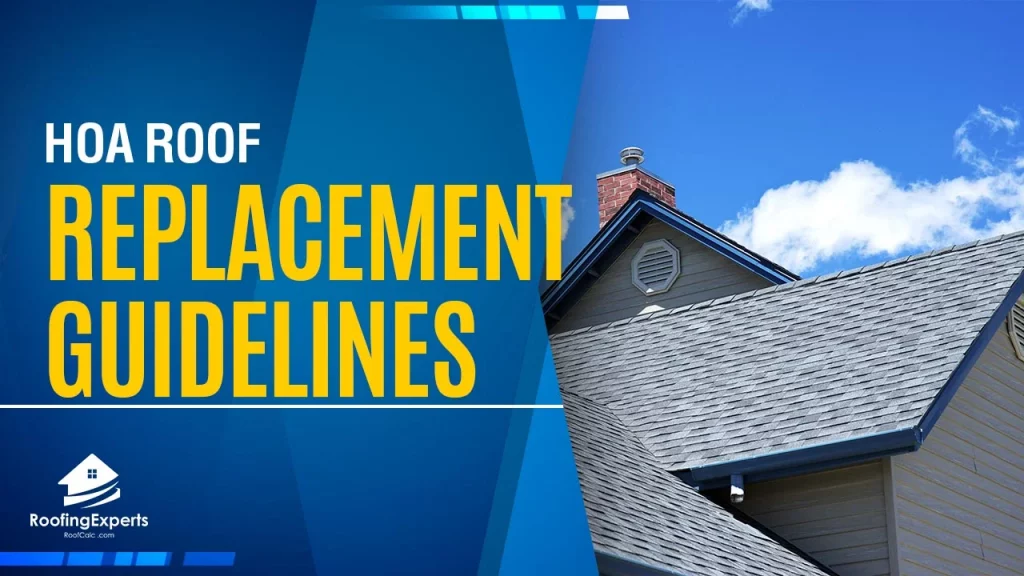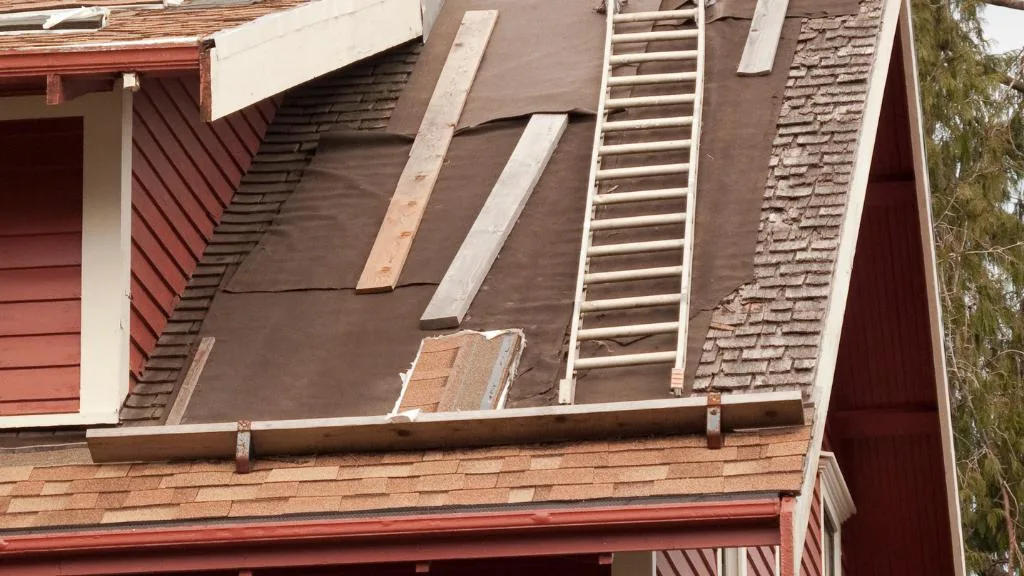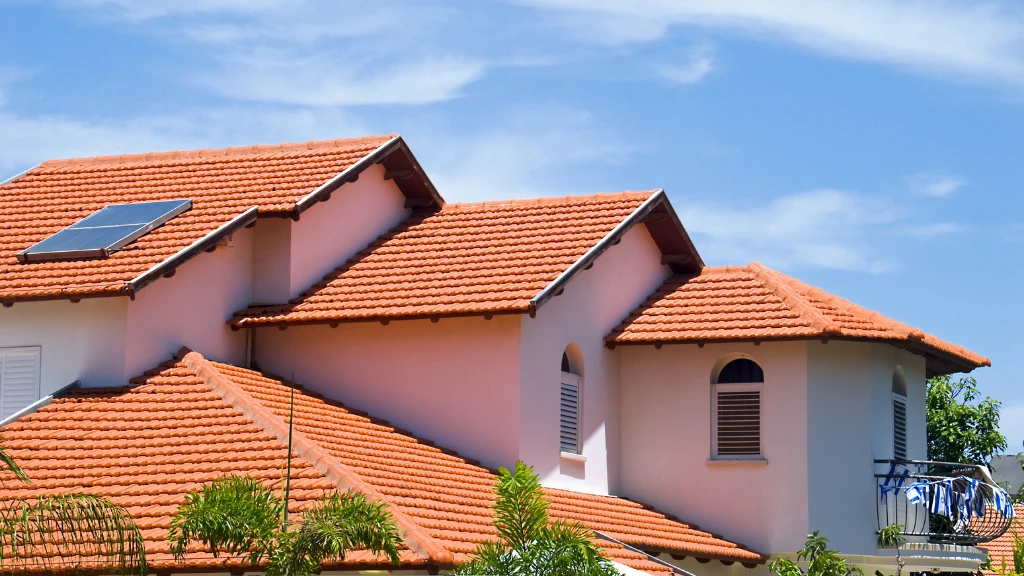
A roof is one of the most important parts of any home. It protects your home from rain, snow, and other inclement weather. Unfortunately, roofs are prone to wear and tear.
If you live in an HOA community with a homeowner’s association (HOA), it may be time for a new roof! Read below for some guidelines on how to replace your HOA-owned roof without breaking any rules or regulations!
What are Homeowners Association Board (HOA) Roof Replacement Guidelines?
In some situations, a homeowner’s association may require the replacement of an existing roof with a new one before selling or refinancing a property.
- In this situation, it is not possible to have the previous roof repaired due to potential damage that may occur during restorative work.
- In this instance, new roof installation must be completed in order for the sale or refinance to proceed.
- HOA roof replacement guidelines generally require the existing roof to be removed and replaced with a new one, even if there is no damage to the roof.
- There are certain situations where an HOA board may allow for repairs rather than requiring a complete roof replacement. However, this situation is very rare.
Whether you reside in a single-family house, a condominium, or a townhouse, your Homeowners Association can provide the ideal roof for you.
Synthetic roofing materials are the greatest roof replacement material since they give homeowners long-term durability and dependability.
The following are some useful suggestions for why homeowner associations should consider switching to synthetic roofing materials as quickly as possible.
- Synthetic roofing materials are environmentally friendly.
- They help you save money on energy costs.
- Synthetic roofing materials are built for high wind resistance which makes them ideal for hurricane areas.
- The resale value of homes with synthetic roofs is higher than homes with other types of roofs since they come with a 25-year warranty.
The Homeowners Association Board should evaluate new goods from a variety of perspectives:
1. Does your new roof add value? – Contribute to the value of your house with a 25-year warranty.
2. Is the roofing material durable? – Say goodbye to expensive repairs for 25 years.
3. Are they energy efficient? – Improve energy efficiency with a lower cooling bill (up to 40%).
4. Does it affect your neighborhood’s curb appeal? – Choose from a wide range of colors and appearance.
5. Does it preserve architectural integrity? – Preserve the historical integrity of your neighborhood.
6. Does it fit within budget? – Save more with a discount fabricator.
7. How does it affect your home’s insurance cost? – Peace of mind with a 25-year warranty.
8. Will it affect the resale value of your house? – A premium quality roof will increase your home’s resale value.
In short, there are many reasons why homeowners associations should be taking advantage of the synthetic roofing materials on the market rather than shingles or concrete roofs which have been used traditionally for decades.
Not only do these new roofs offer great durability and beauty for years to come, but they will also increase the value of your home.
More importantly, synthetic roofing materials will protect you and your family from extreme weather conditions for decades to come.

What is Homeowners Association Board (HOA)
A homeowners association board or HOA is a group of people elected by the owners within an area to make rules, regulations, and take care of the common areas.
1. The first type of homeowners associations were created in California where developers wanted to build communities for residents but would not maintain them after sale.
– Today most HOAs are set up where the developer will transfer all common areas and amenities to a non-profit Company managed by a HOA Board after purchase of the property.
– This type of HOA is also known as a Declarations-run HOA.
2. The second type of HOAs are those that are set up by the people who purchase homes within an area, and thus do not have any ownership in the amenities or common areas.
– These associations are managed by volunteer homeowners on board of directors just like any other non-profit organization.
– These HOAs are the most common in newer communities of detached homes or condominiums.
- They can be set up by developers or residents. However, the way they are managed and maintained is usually left to volunteer homeowners on a board of directors.
These HOAs can ‘outsource’ management and hire an independent company to maintain the amenities and common areas.
3. The third type of association is called a Professional Management HOA.
– This type of HOA is run by a few employees, such as a property manager and assistant property managers under the supervision of the homeowners board.
– Throughout the years, several companies have developed software that enables HOAs to be fully managed by employees while following all state and federal laws.
4. The fourth type of HOA is called an Architectural Control Committee (ACC) .
– This type of HOA is for homeowners associations in which each homeowner has input on the exterior of his or her property.
– Each homeowner submits blueprints to this committee for approval before any construction can begin.
– The other two types of homeowners associations usually do not have an ACC.
All four types of HOAs are governed by their governing documents, which establish how each HOA must be formed, who can purchase homes within the community, and how it is managed.
In some cases, the developer of a neighborhood or subdivision will create a homeowners association from scratch before selling any properties in the neighborhood.
The developer’s representatives will meet with prospective residents to explain rules and regulations. In other cases, a homeowner buys property in a subdivision or neighborhood that already has an existing homeowners association.
Final Thoughts
If you are unsure about whether or not your homeowners association board will allow you to replace the roof on your house with a new one, contact them first.
They may be able to provide you with detailed information that can help you make a decision concerning this matter.
If they are unable to provide you with the necessary information, contact your insurance company for assistance.
Finally, make sure to contact several roofing contractors who are able to assist you in finding the right roof replacement material before making your final decision.


